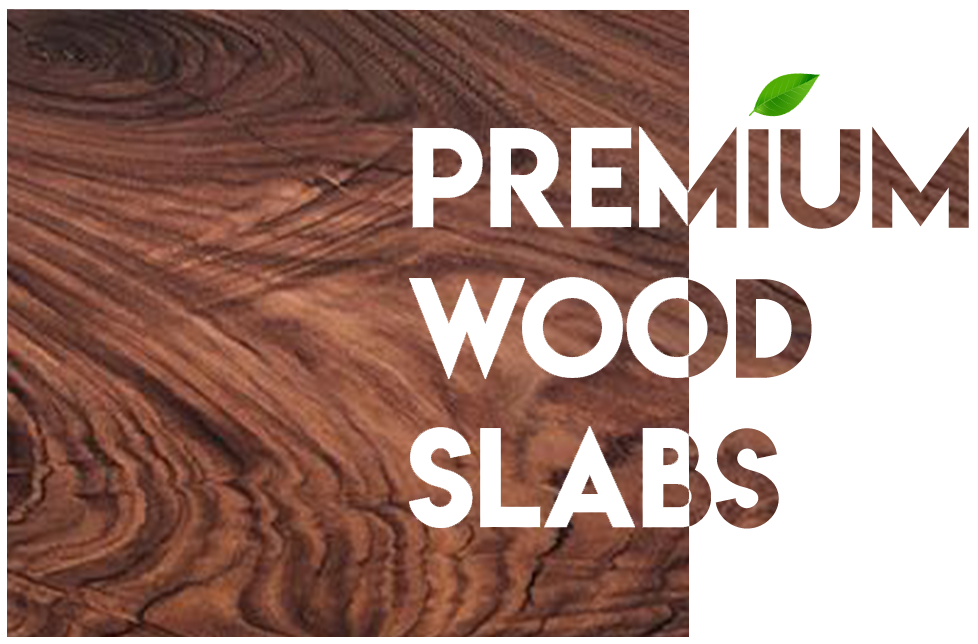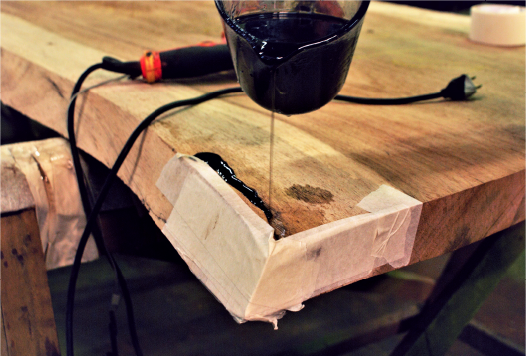Working and finishing a Parota Wood Slab; not such a difficult task.
- Cutting and machining in dry wood typically produces smooth, clean edges and joints although you may experience some chip-out with the planer or jointer.
- Sharp tools will prevent most joint “fuzz” but not all of it.
- Parota glues well with any adhesives woodworkers are likely to use in their shop. The wood will absorb woodworking adhesives, such as Tightbond, quite fast – so plan on using enough adhesive (or apply a wash coat first) so that the joint doesn’t become starved.
- Screws do not hold well in Parota, much as they would not in redwood.
When finishing Parota, You should have good success using the following process.
- Tung oil to bring up the color and figure – 1 or 2 coats;
- Sanding sealer – you can use a wax-free shellac seal coat (2 lb. cut), then sand out the first coat with 220 grit. This seal coat will “stand up” the fuzz that Parota typically has, allowing me to “clip the fuzz”.
A second shellac seal coat and sanding with 320 grit usually removes the last of the fuzz and prepares the surface for your favorite topcoat.
You can use a variety of water-based and solvent-based topcoats on Parota, all with excellent results provided you follow good surface preparation procedures. Just consider the intended use.
In particular, since Parota is soft, you might want a more durable/hard finish if the intention is to use Parota for a table top, counter top, etc. where wear might be a large factor.
Finally, when performing operations on Parota that will generate dust, we strongly recommend using a dust mask. Parota’s dust can be very irritating.

